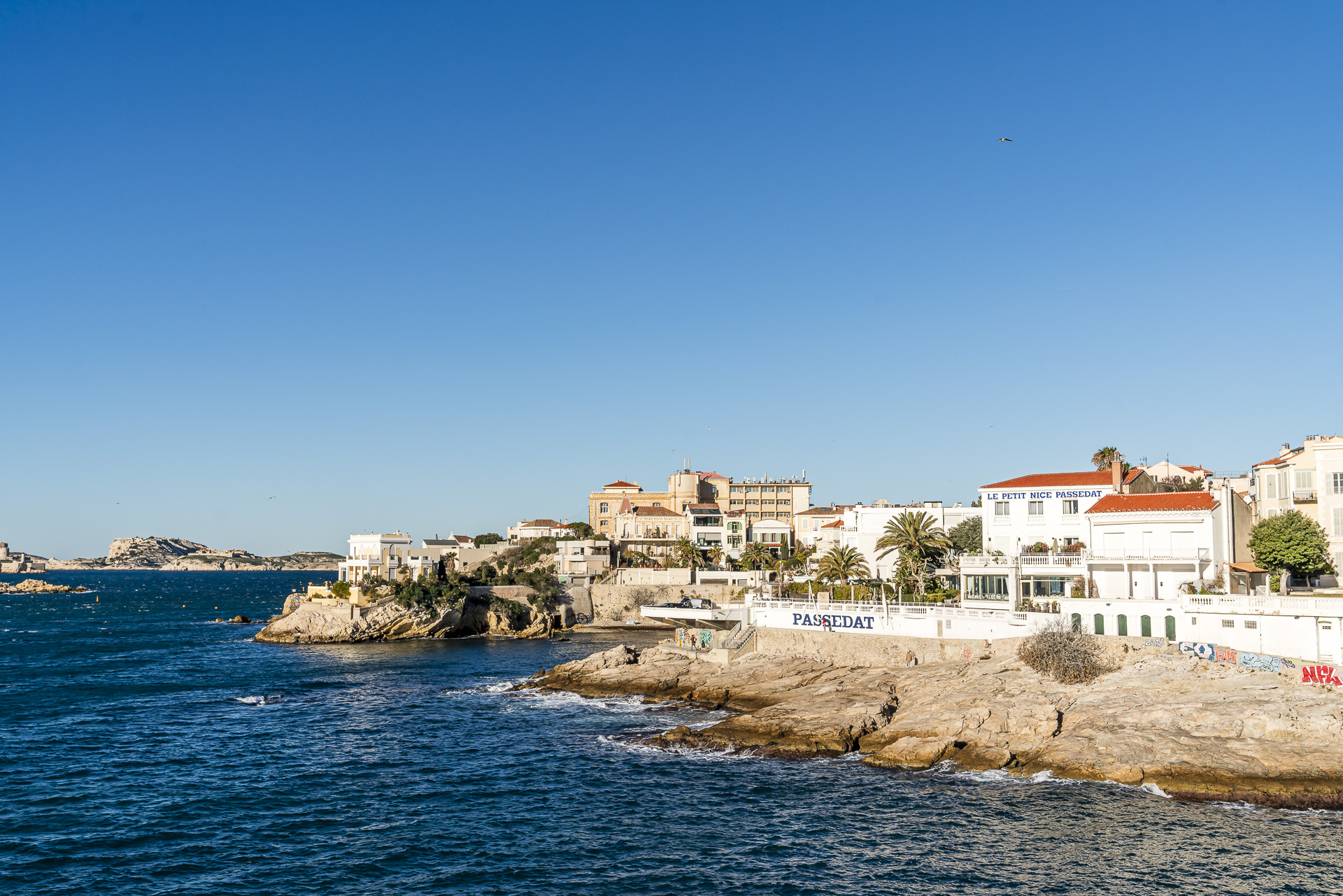
Marseille: 12 Tips and Attractions for the French Port City
There are cities that have been on my bucket list for ages. Marseille is one of them. Despite its bad reputation, the southern French port city has become a popular travel destination in recent years. It’s high time to pay a visit to France’s second largest and oldest metropolis.
We chose a rather unconventional time frame for a city trip – the Christmas holidays. Marseille served as the starting and ending point of a two-week trip through southern France. In total, we spent four nights and five days in Marseille, staying at two different hotels. It was too short to see all the sights – but definitely enough time to get a good overview and pick out a few highlights.
1. Check-in at Le Petit Nice Passedat
One thing is for sure: staying at Le Petit Nice Passedat. Admittedly, a stay at this 5-star hotel located in the bay of Maldormé is not a bargain, even over the Christmas holidays. However, it is significantly more affordable than in the summer months. The Le Petit Nice (partner link) is an institution! Its history goes back over 100 years. In 1917, Germaine Passedat acquired the whitewashed building in Greek style overlooking the Frioul Islands to open a hotel-restaurant. His son, Jean-Paul Passedat, took over the business and was awarded the first Michelin star in 1977. Ten years later, the third generation of the Passedat family, Gerald, took the helm. In 2008, he earned the third star and has maintained a top culinary position ever since.
In my opinion, it’s not just the gastronomic component, but more the sensational location that speaks for a stay at Le Petit Nice. Thanks to the off-season, we received a complimentary room upgrade and enjoyed a double room with a spacious terrace and magnificent sea view (even directly from the bed). And with the weather cooperating beautifully, it was definitely an unforgettable experience!
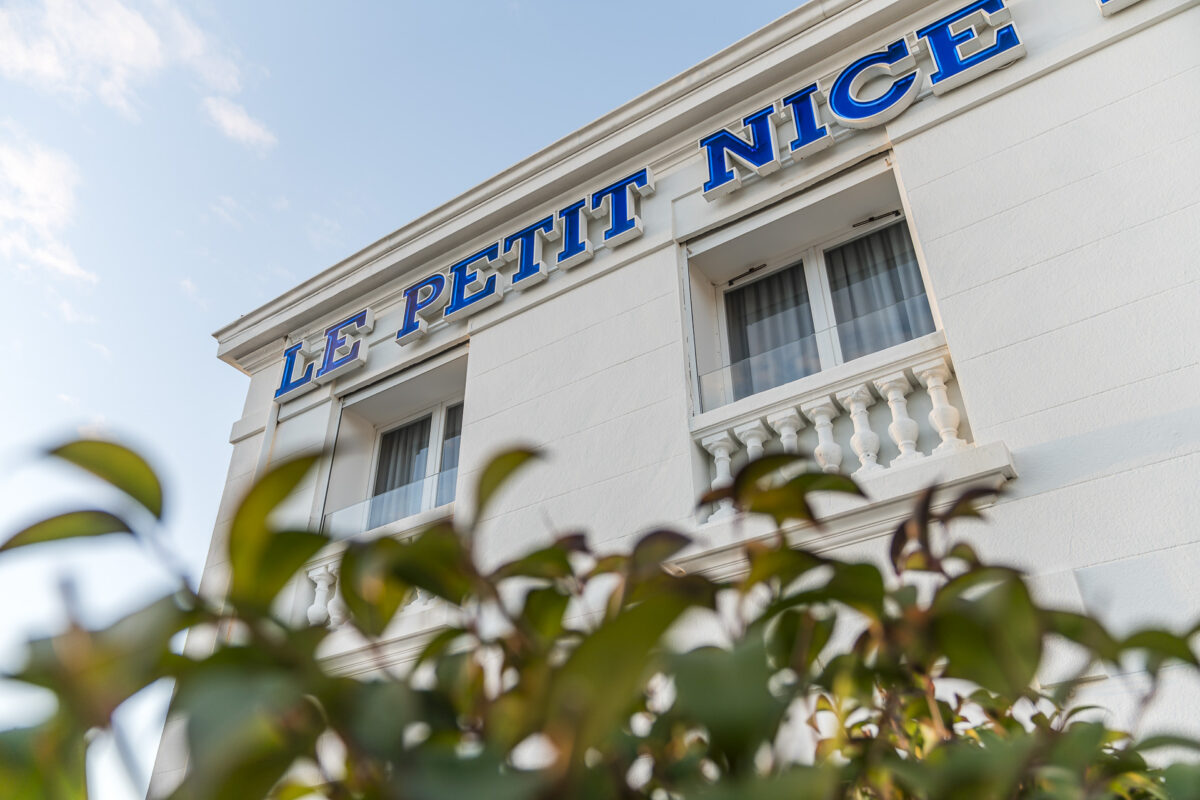
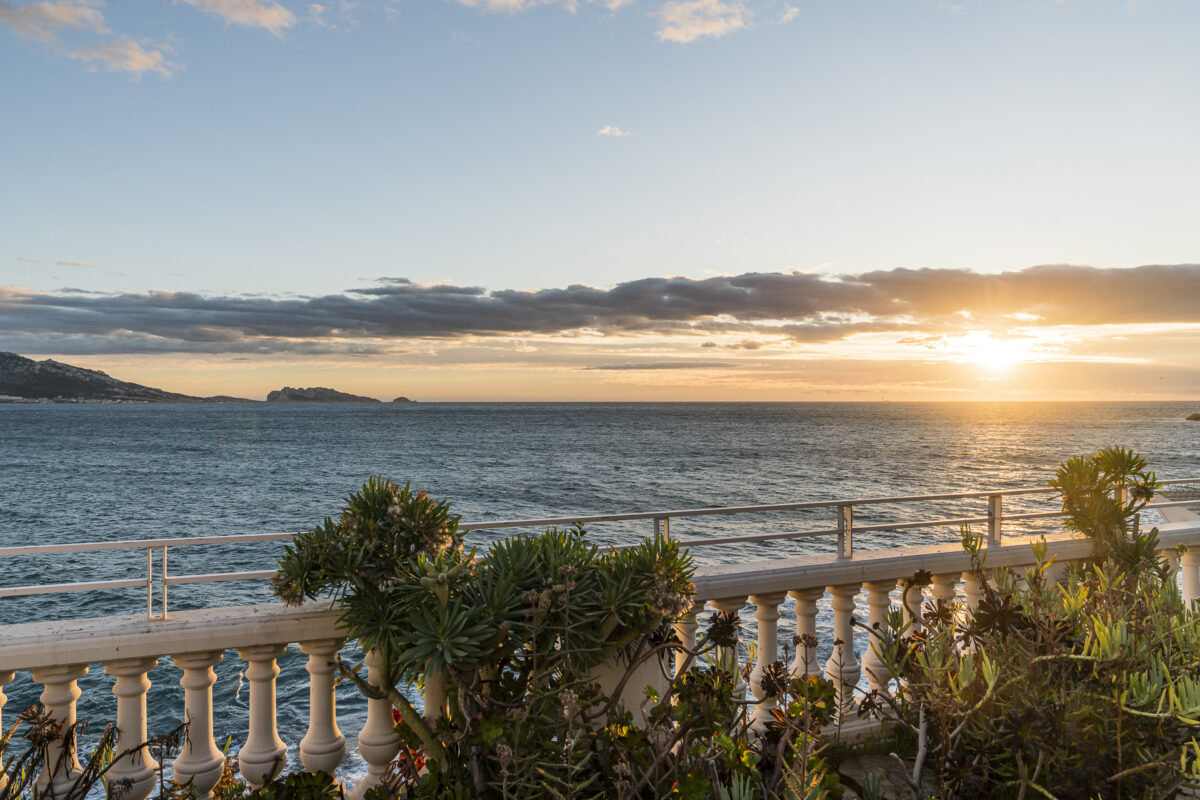
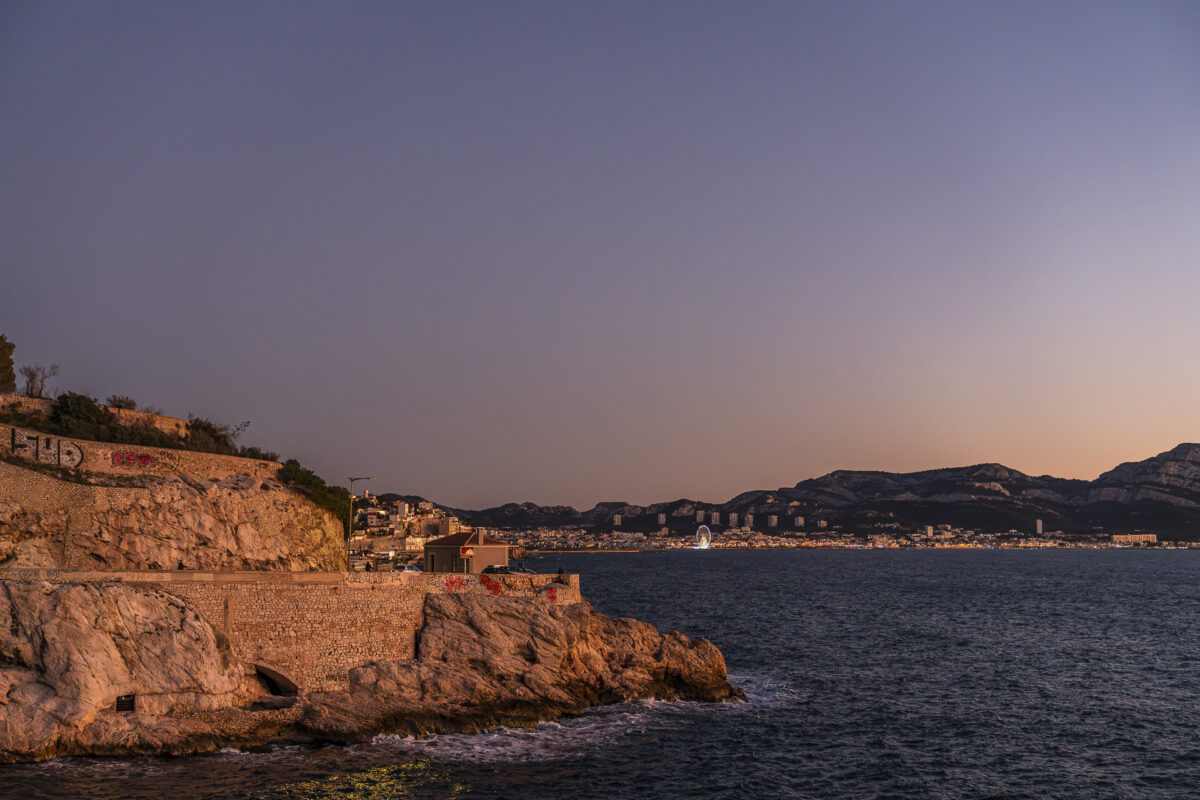
2. Stroll Along Corniche Kennedy
Le Petit Nice is just a few meters from Corniche Kennedy. The nearly four-kilometer-long coastal road stretches from Plage des Catalans in the city center to just before Plage du Prado in the 8th arrondissement. The Corniche is a popular jogging route for the “Marseillais.” In recent years, a continuous bike path has also been created. If you take half a day to stroll along the Corniche in good weather, you can discover some really beautiful spots. For example, the “Vallon des Auffes.” Although the once fishing village has been “swallowed” by the metropolis, the small harbor still exudes a touch of the charm of days gone by.
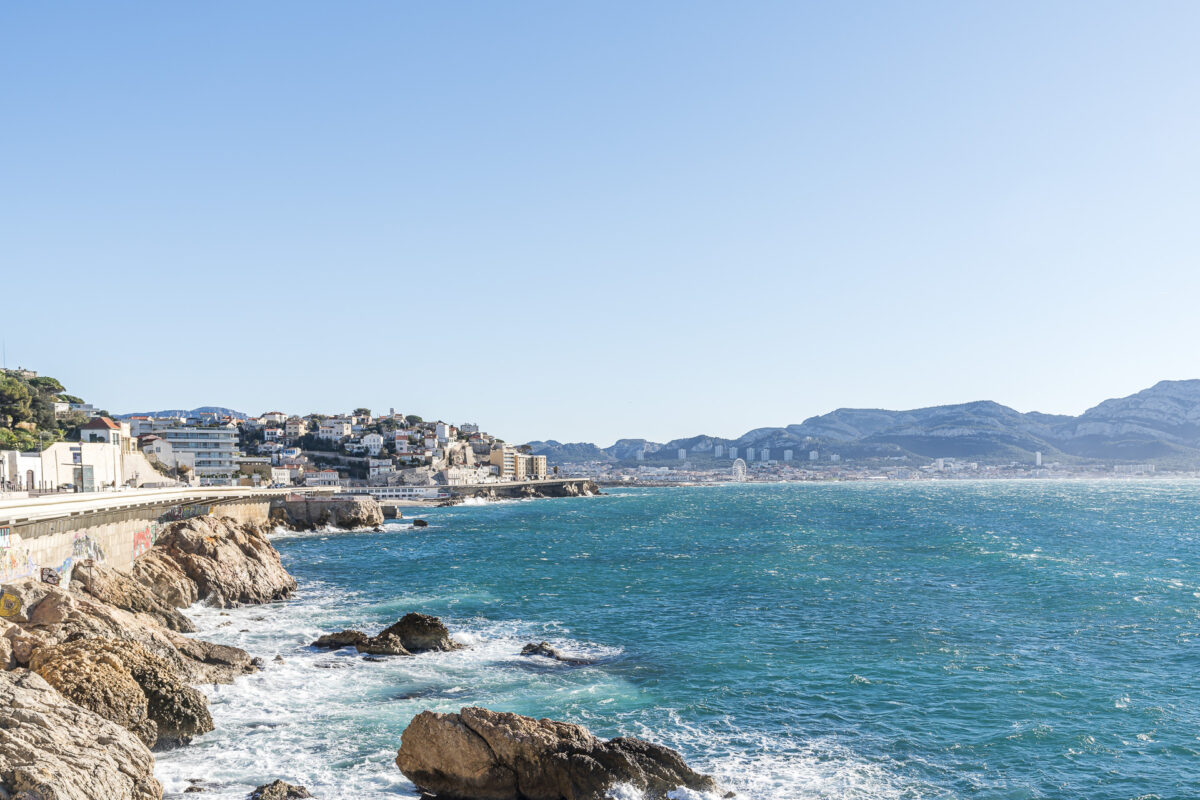
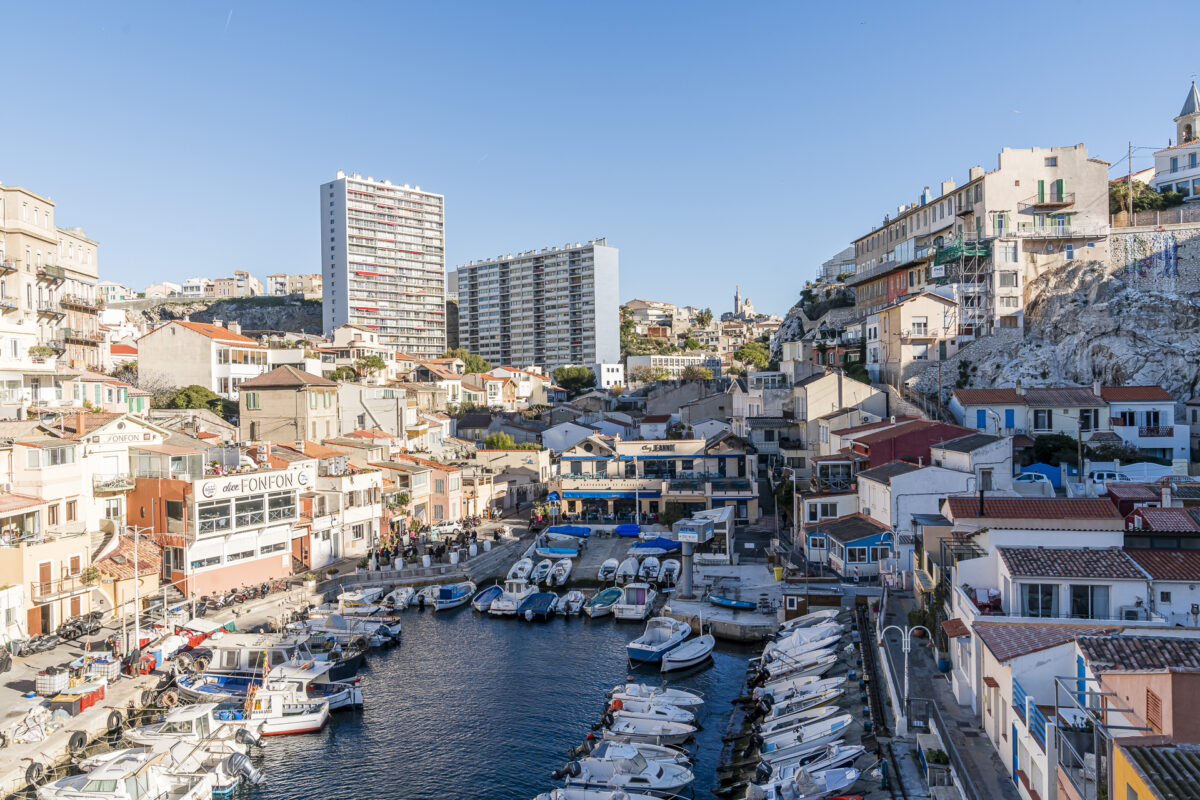
In addition to Le Petit Nice Passedat, there are other culinary institutions along the Corniche. For example, the Michelin-starred Restaurant L’Épuisette pleasantly surprised us. If you like, you can get an entire menu centered around Bouillabaisse here. Another restaurant known for the Provençal fish dish is Chez Fonfon. However, I can’t judge how their Bouillabaisse compares, as the place didn’t seem appealing enough to us. Instead, we ended up at Restaurant Peron by chance.
While the cheapest menu at Restaurant L’Épuisette costs 98 euros, you pay around 65 euros for an entrée and main course on the sun terrace of Restaurant Peron. The coveted sea view is something the restaurants charge for. Alternatively, there are some cheaper options on the “city side.” My tip: The Brasserie O’Canotier, where you pay between 10 and 15 euros for a starter and between 15 and 25 euros for a main course.
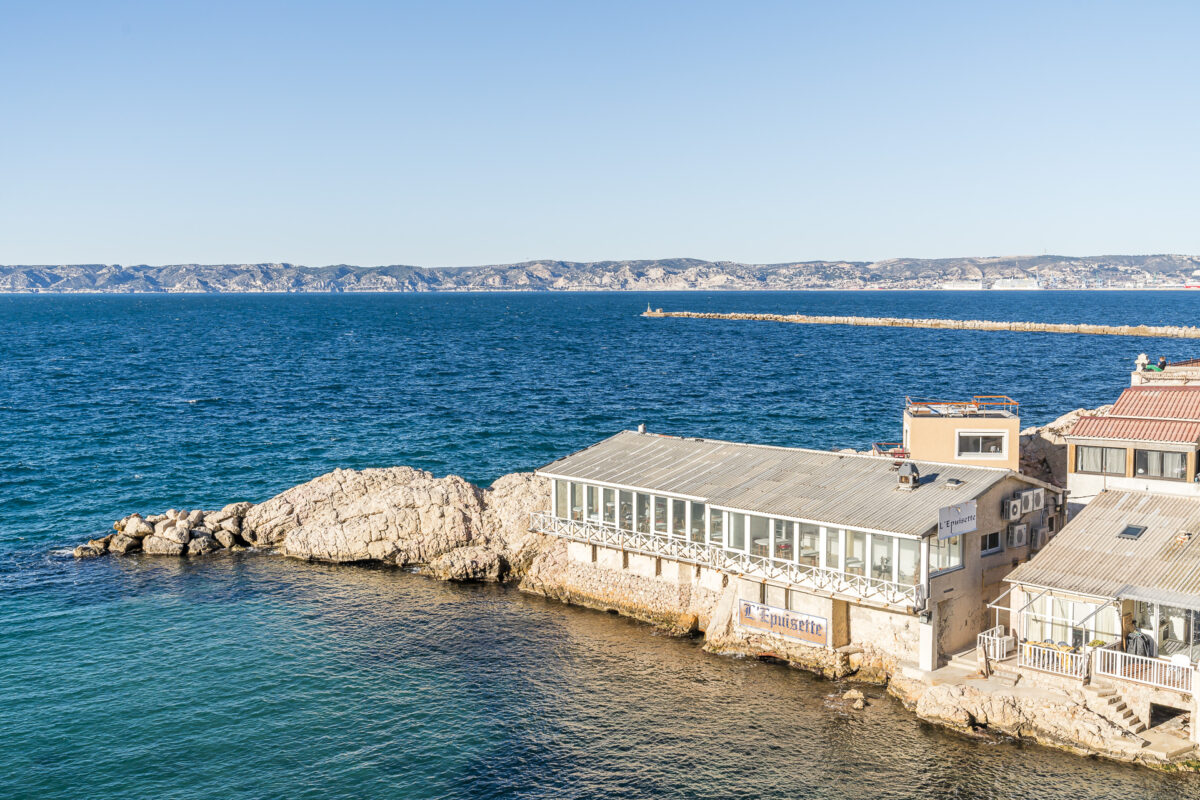
3. Visit Corbusier’s Cité Radieuse
As you may know, we enjoy city walks. So, we extended our stroll along Corniche Kennedy into a half-day city tour through the 8th arrondissement. Besides gaining some positive step counts and interesting insights into residential neighborhoods, you can also visit two other landmarks. One of them is the “Cité Radieuse” by Le Corbusier, which is a listed building. It is the first of a total of five so-called “Unités d’Habitation (housing machines)” that the Swiss architect realized between 1947 and 1965 in France and Germany (Berlin) as a response to the housing shortage in the post-war years. These buildings pursued an innovative idea of internal organization – combining different uses – separated by floors – together. Living, shopping, dining, schooling, sports, and leisure – all under the roof of the housing machine. In 2016, Cité Radieuse was added to the UNESCO World Heritage list along with other works by Corbusier.
Cité Radieuse is still “normally” inhabited today. However, visitors can freely access the shopping floor and the rooftop including the terrace. For this, you only need to register at the reception and enter your contact details in a list. In the summer months, the temporary museum “MAMO” also uses the rooftop – making it a bit less barren than in winter.
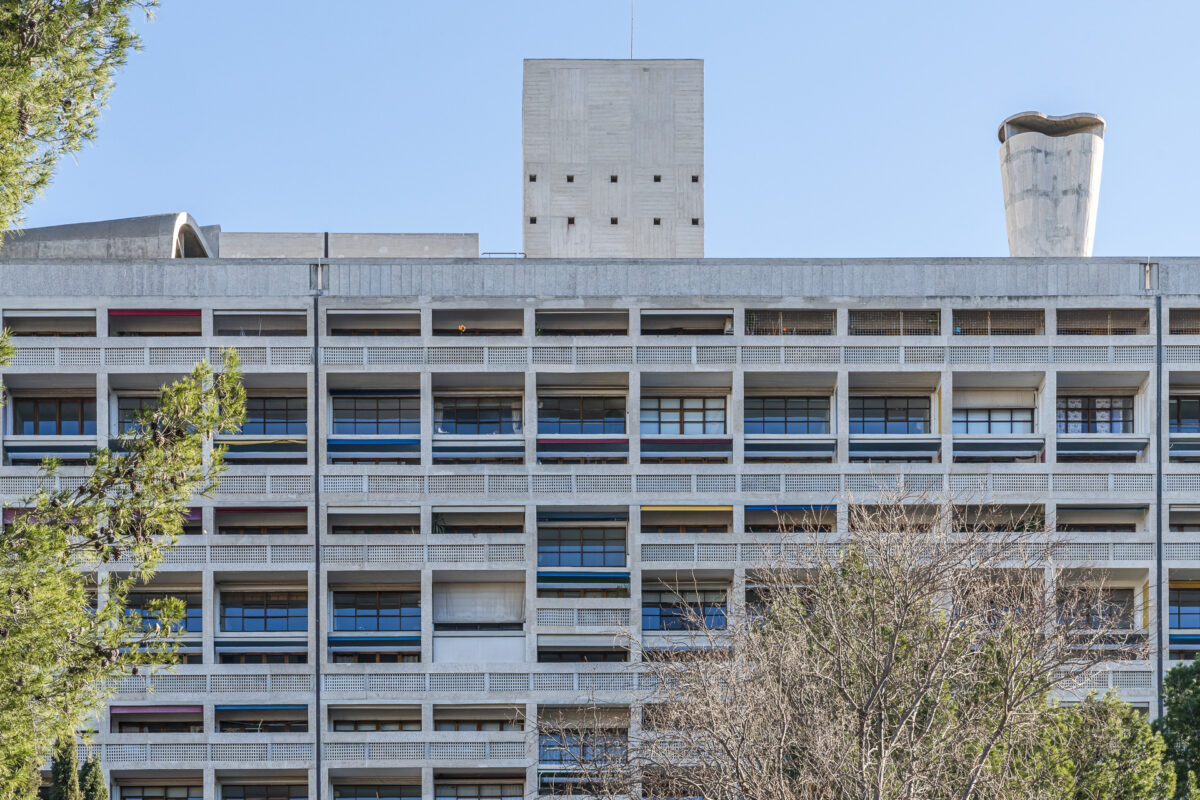
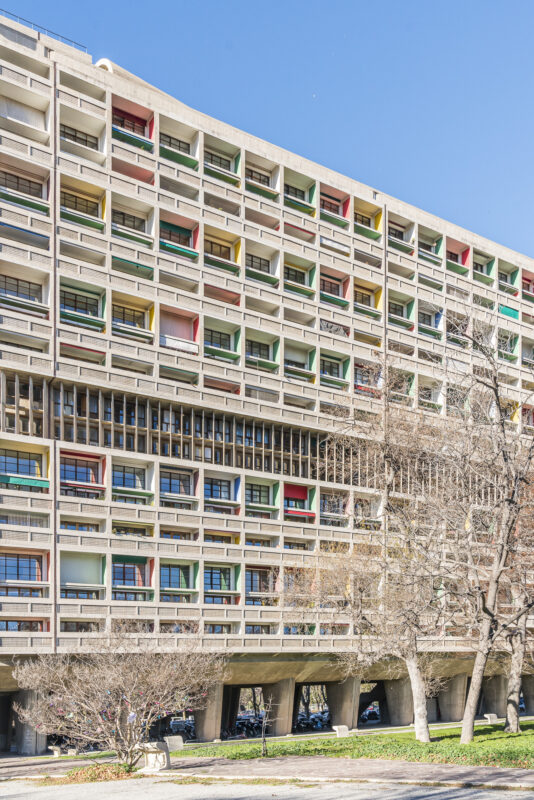
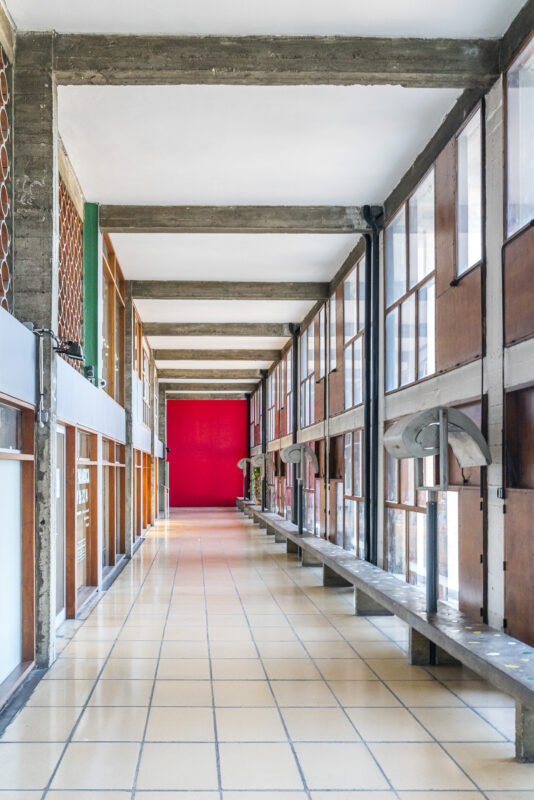
By the way, there is also a hotel (partner link) in Cité Radieuse. The room prices start at around 110 euros. More information for your visit to Cité Radieuse can be found here: citeradieuse-marseille
If you walk about twenty minutes further through residential neighborhoods from Cité Radieuse, you will reach the Musée d’Art Contemporain [mac]. The collection can be viewed for free. It’s definitely worth a short stop if you are already in the area!
Opening hours of mac: Daily except Tuesdays 09:00 – 18:00 | Free entry to the collection | More info: musees.marseille.fr
4. Take the Climb to Notre-Dame de la Garde
The Basilique Notre-Dame de la Garde, towering high above Marseille, is one of the most iconic landmarks of the port city. It’s no wonder that it’s also one of the most visited attractions. A trip here is worthwhile despite its popularity! Nowhere else offers such a magnificent panoramic view over Marseille. A particular highlight is experiencing the sunset from up here.
From the metro station “Vieux Port,” the climb takes about 30 minutes, involving nearly 140 meters of elevation gain. Alternatively, you can also take city tour buses up to the basilica.
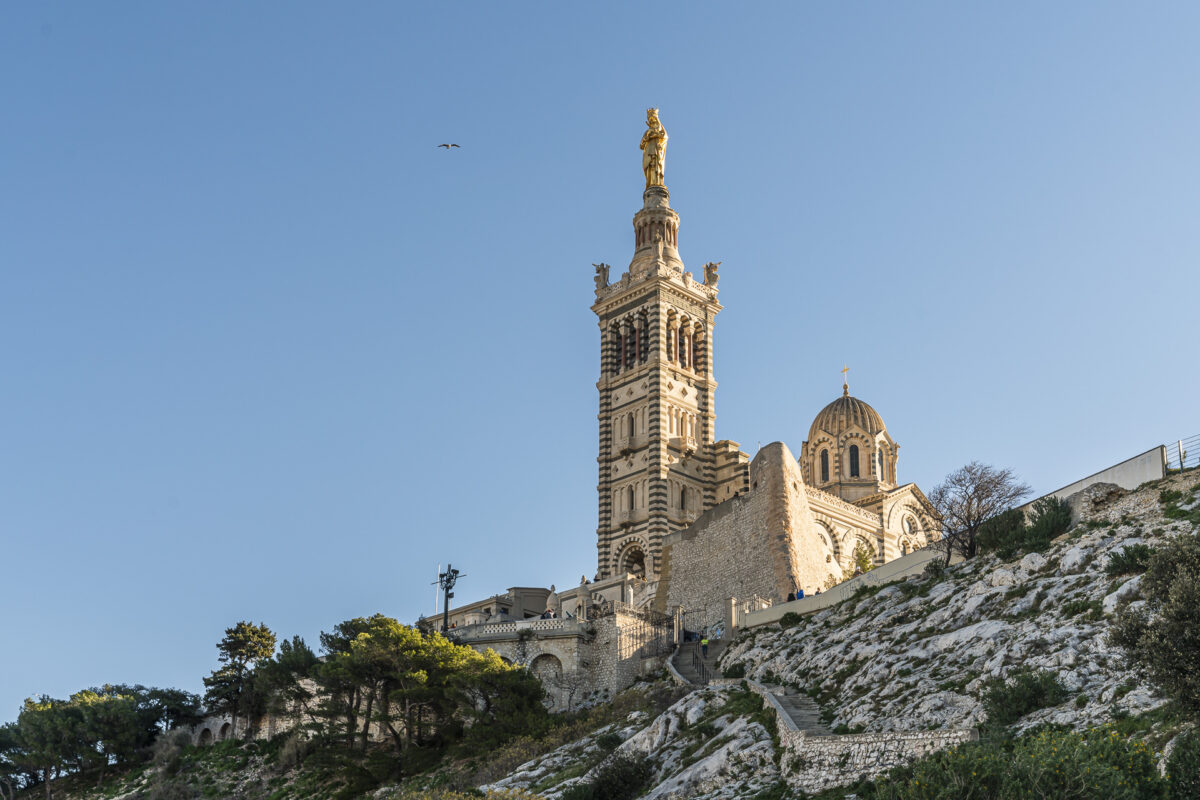
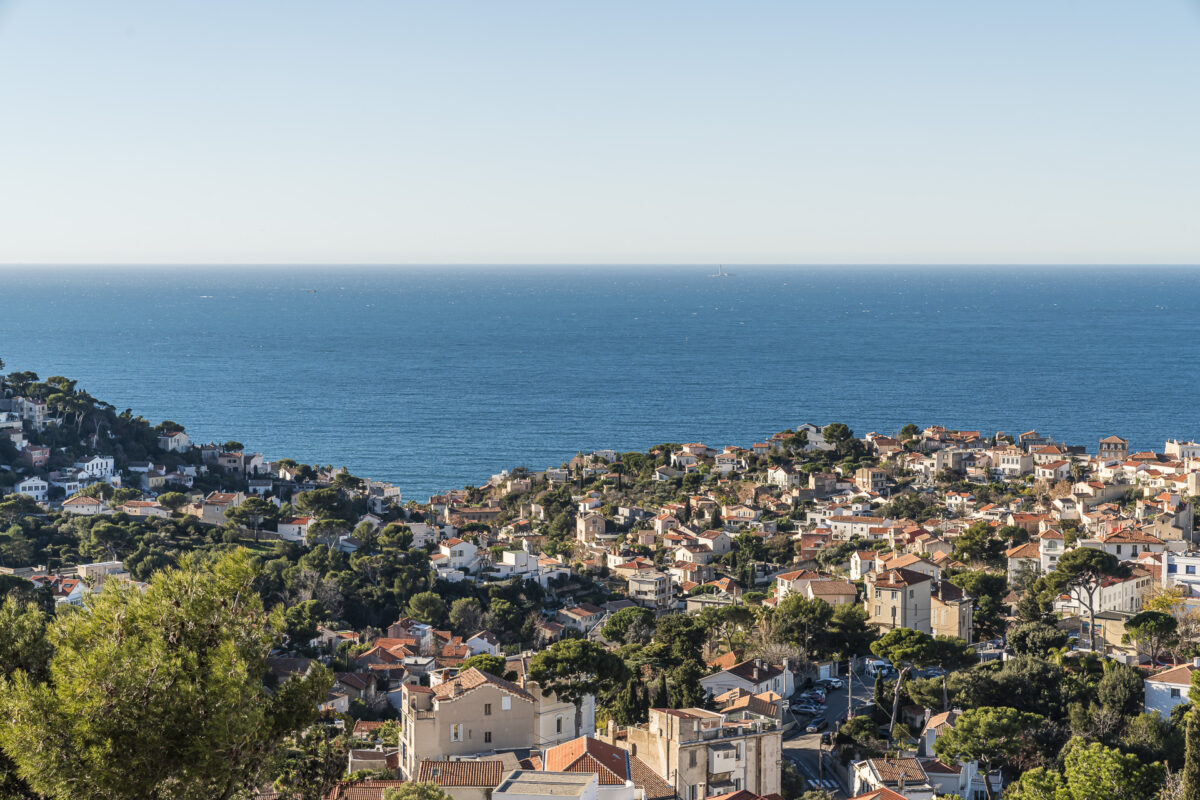
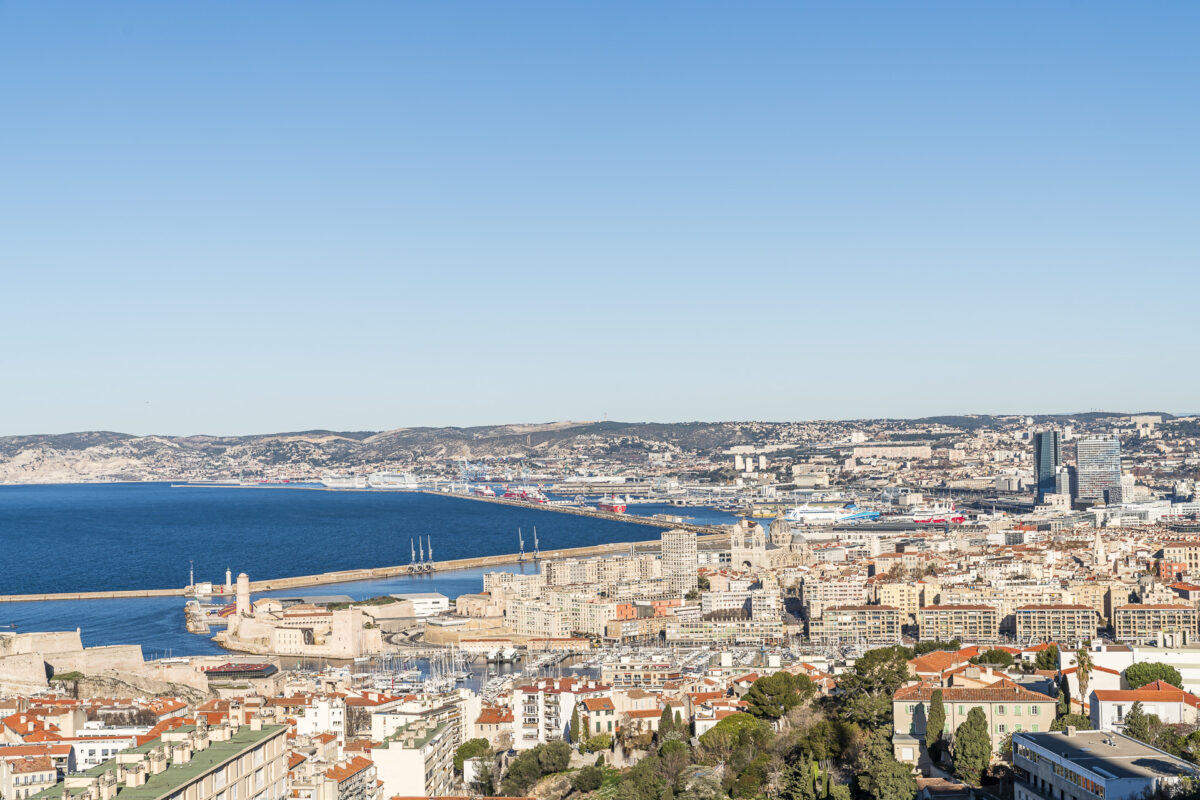
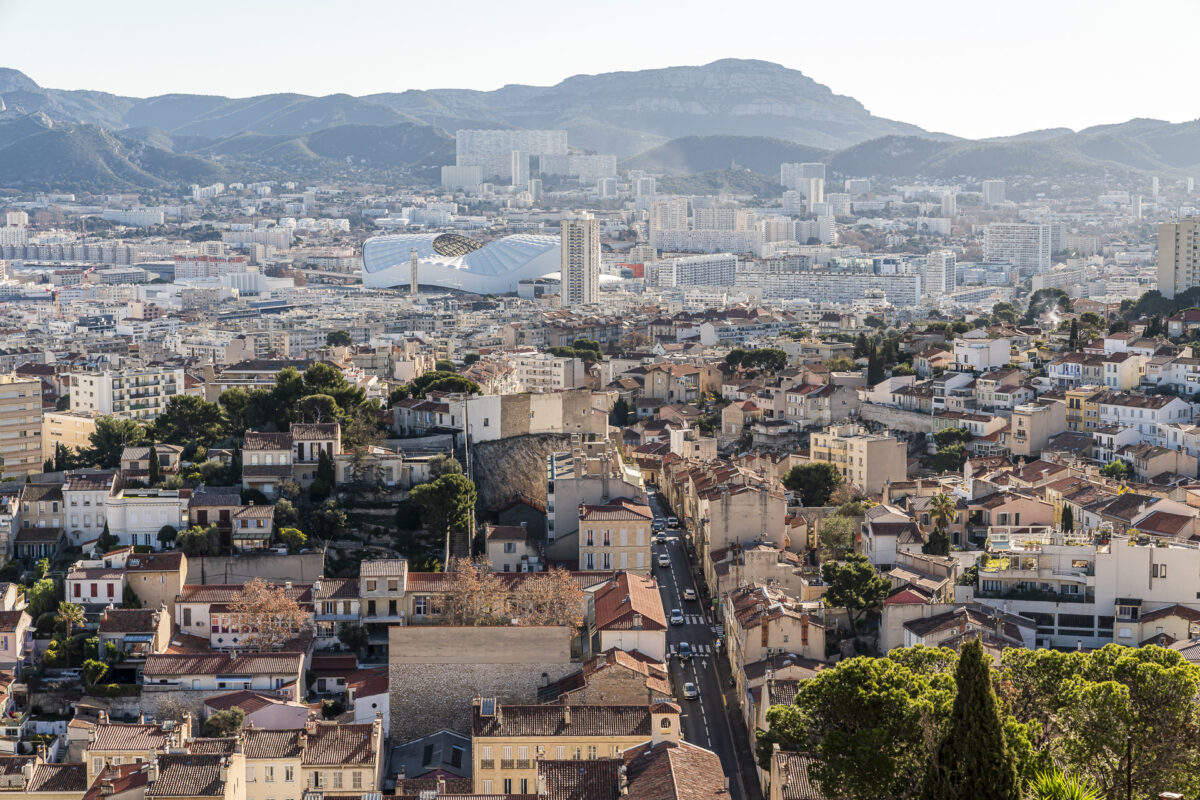
If you not only want to admire the panorama but also take a look inside the basilica, you can do so daily between 07:00 and 18:00 for free.
5. Explore the Area Between Cours Julien and the Old Port
Descending from Notre-Dame de la Garde back into the city bustle, you will be greeted by a multicultural flair between the Old Port, the shopping streets behind it, and Cours Julien. On one hand, you have the upscale shopping streets – on the other, the narrow, sometimes grimy alleys of the Noailles district. In 2018, the district made international headlines with a tragic collapse of dilapidated residential buildings. The thin line between a trendy alternative scene and obvious poverty is quite narrow here – right in the heart of Marseille. Climb the colorful painted steps of the Escalier du Cours Julien to reach the long, car-free square lined with numerous cafés. Every third Sunday of the month, a popular flea market takes place here.
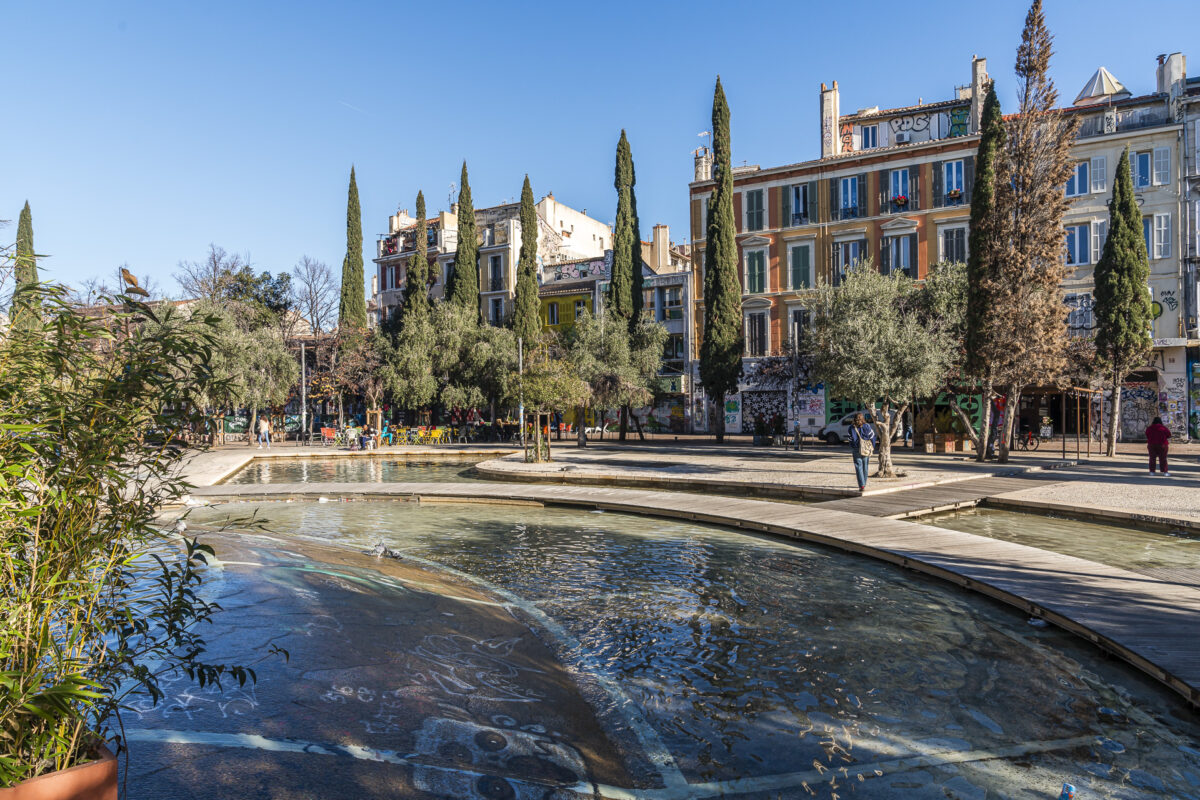
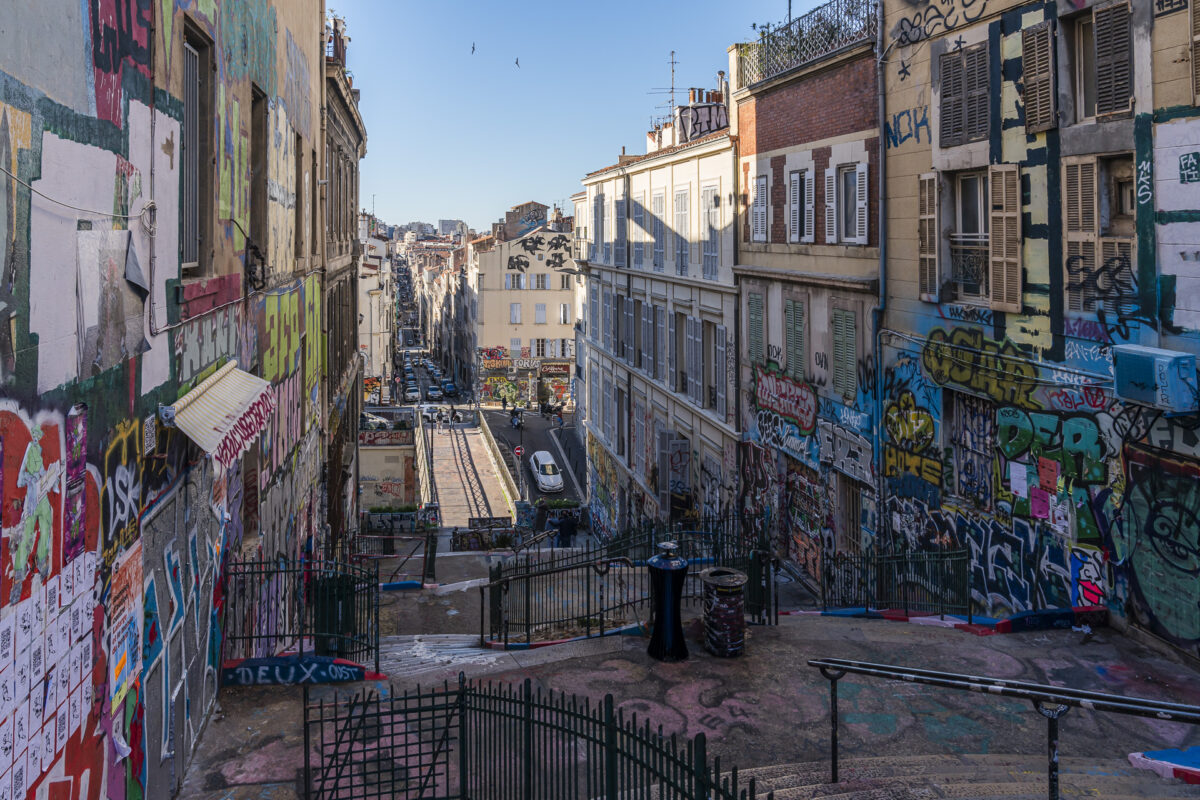
In the streets behind Cours Julien, there’s even more street art to discover. A stroll through the “triangle” of Vieux Port, Cours Julien, and Marché Noailles takes about two to three hours and is well worth it in my opinion. If you want to recharge with some coffee along the way, I recommend a stop at Deep Coffee Roasters (15 Rue Glandeves).
Another highlight is the daily fish market held at the Old Port of Marseille on “Quai des Belges.” The entire harbor area was made more pedestrian-friendly about ten years ago and now invites leisurely strolling with exclusive “yacht-spotting.” Another eye-catcher is the delicate Pavillon by Norman Foster on thin stilts over the entrance to the Vieux Port metro station, reflecting the surroundings.
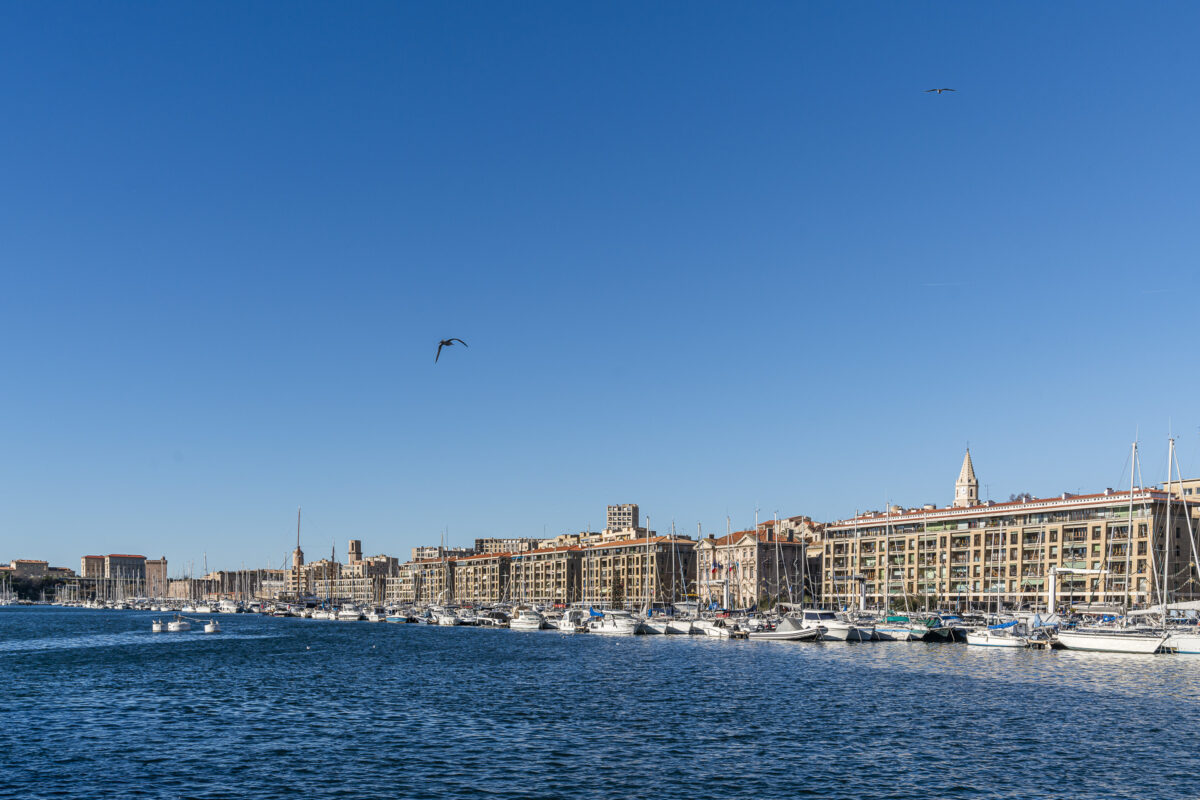
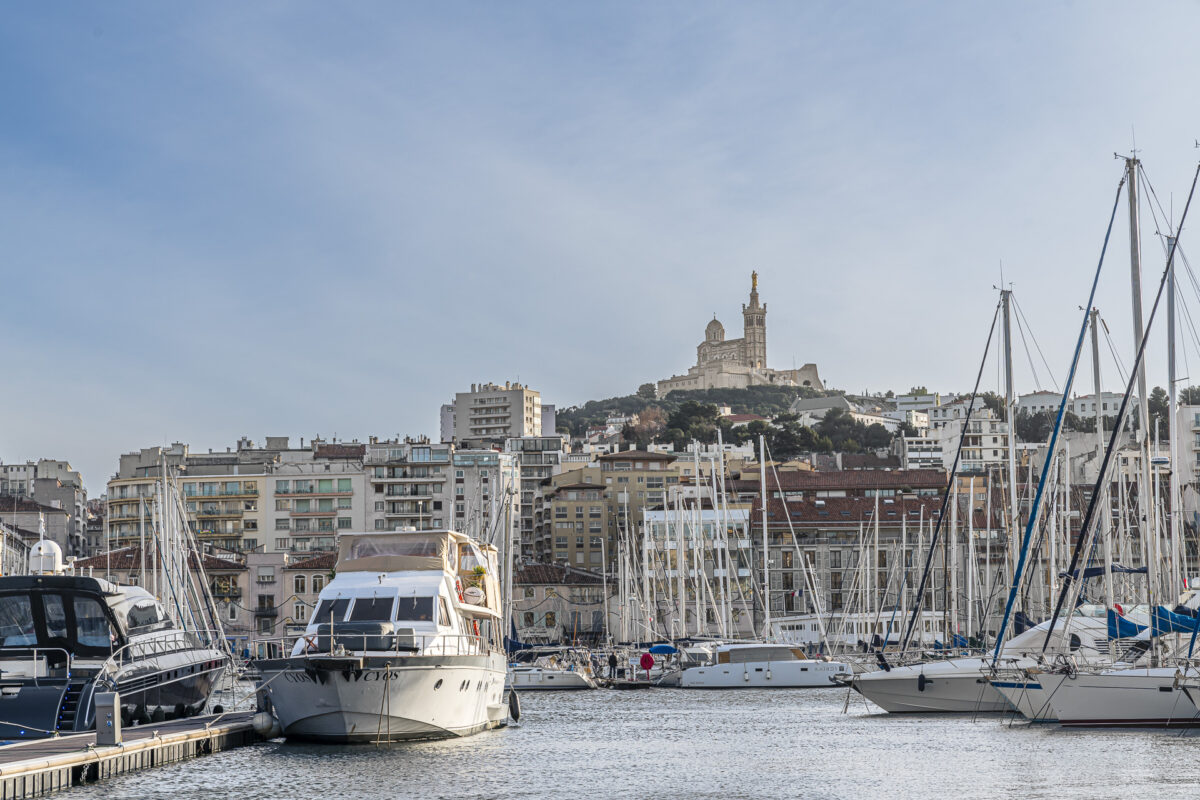
6. Dive into the Old Town Alleys of Marseille
The city tour takes us from the Old Port up several flights of stairs to the Le Panier old town district, located above the “Quai du Port.” The prettiest alleys are between Rue de Lorette and Rue du Panier. Here, the big city of Marseille almost feels like a village.
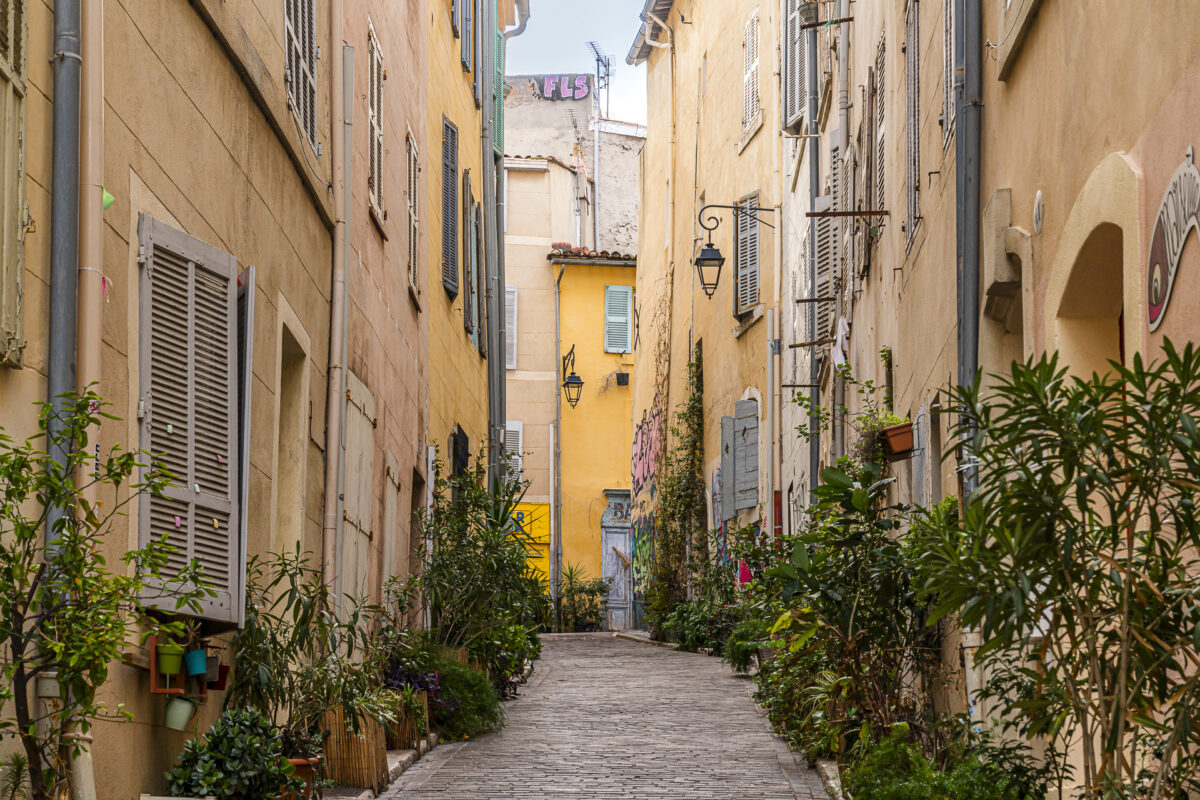
It’s best to just wander through the narrow streets by following your nose. This way, you’ll come across small, owner-operated shops and restaurants without much searching. You can also find some interesting street art here.
Extra tip: The former architecturally impressive nursing building “Hôtel Dieu” is now home to the luxury hotel chain Intercontinental. The hotel’s “The Capian Bar” is a great place to take a short break away from the hustle and bustle.
7. Take a Look Inside the Cathedral of Marseille
At the western end of the Le Panier district, in a somewhat isolated location, stands the Cathedral of Marseille. The monumental building in neo-Romanesque-Byzantine style is impressive. In my opinion, a short look inside is worth it! Especially since you are rarely confronted with a crowd here compared to the basilica.
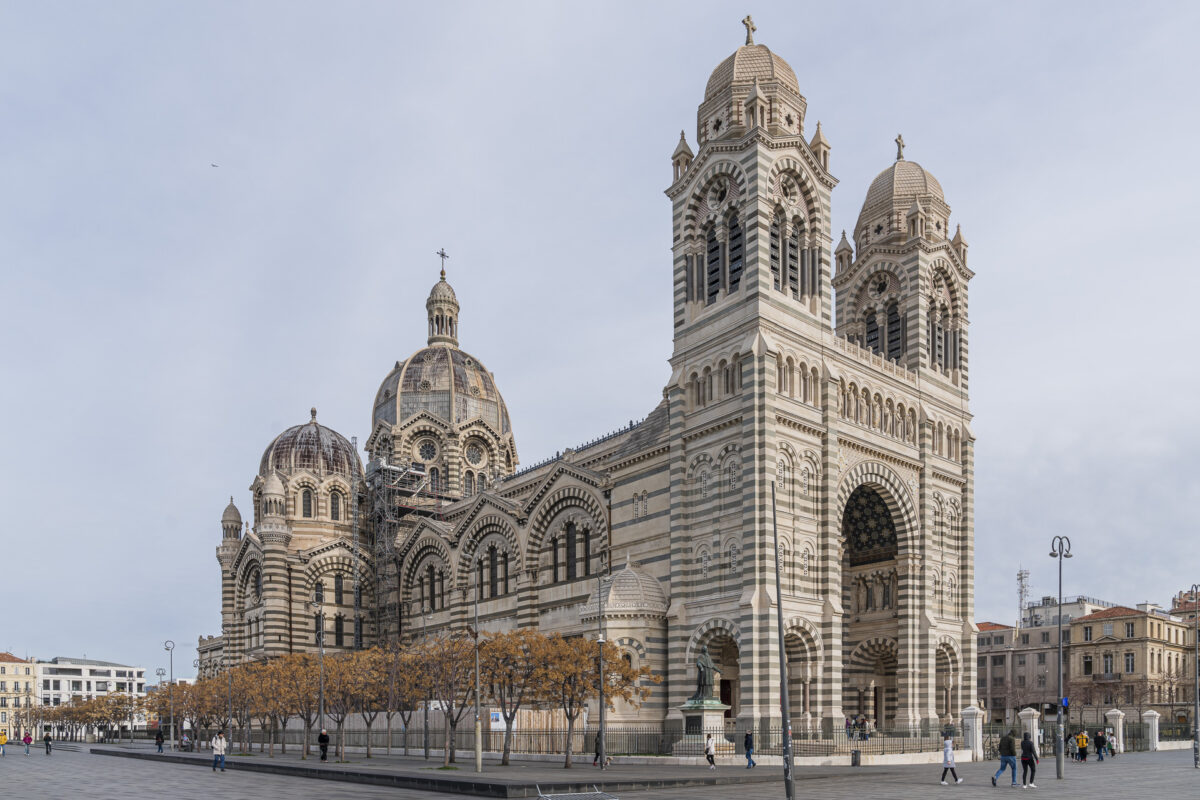
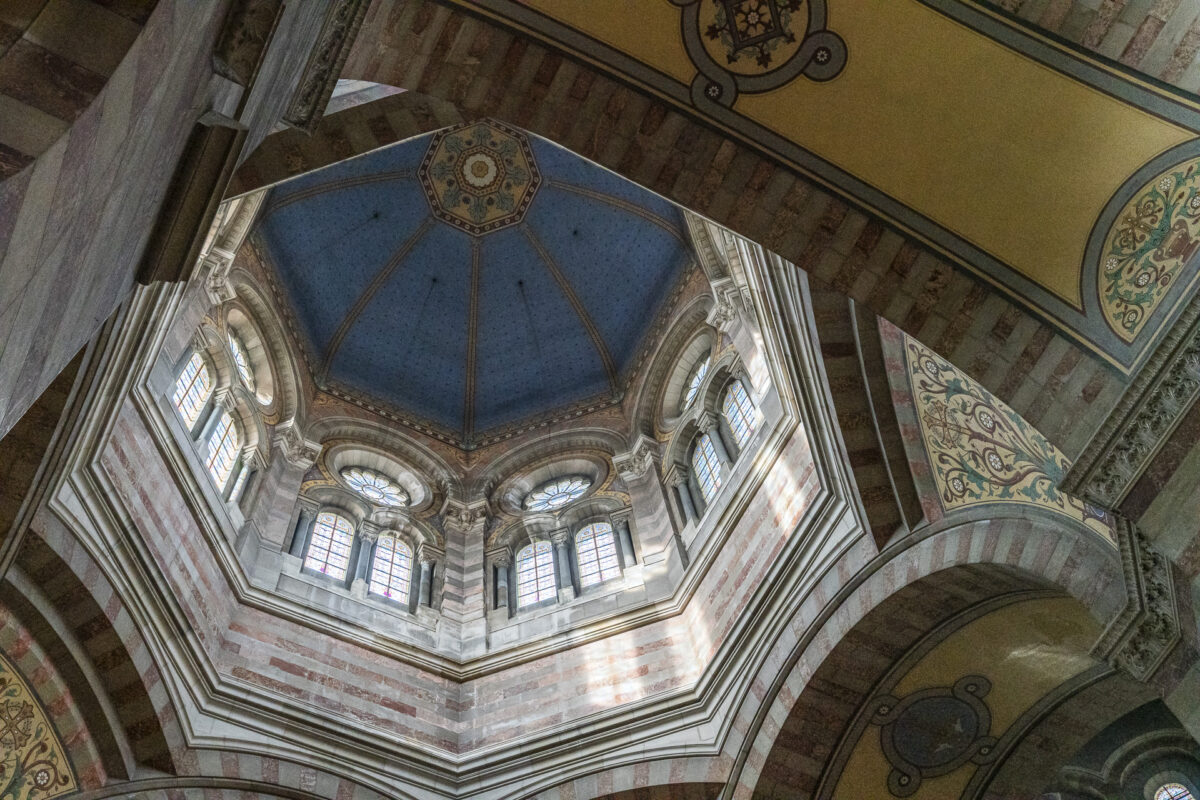
Extra tip: From the cathedral, it is not far on foot to the popular “MuCEM” (see the following section). Before you head there, I recommend a 30-minute detour through the new harbor district “La Joliette” to the “Frac Sud – Cité de l’art contemporain.” The center for contemporary art is housed in a new building designed by Japanese architect Kengo Kuma. I was particularly impressed by the exhibition “Invisible” by Martha Wilson, which deals with the aging process.
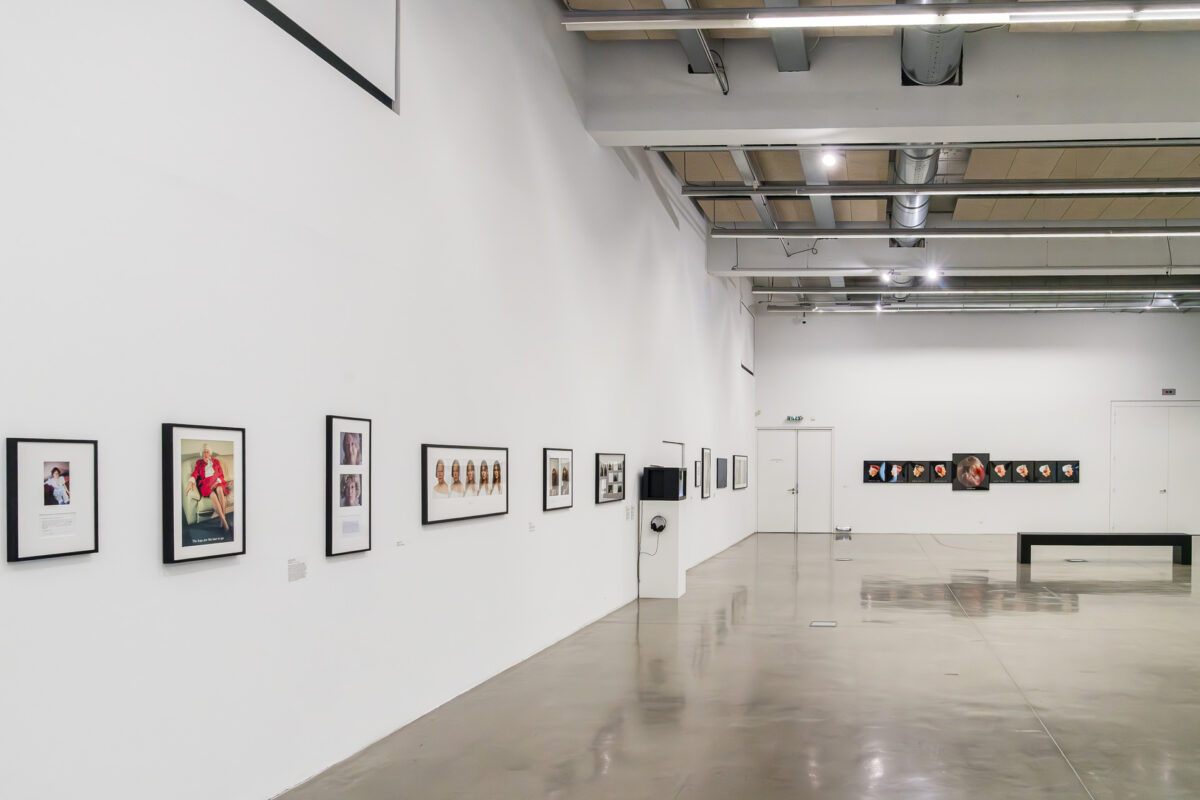
Opening hours of Frac Sud: Wednesday to Saturday 12:00 to 19:00, Sunday 14:00 to 18:00, closed on Monday/Tuesday | Single ticket for adults 5 euros | Free entry on Sunday | More info: fracsud.org
8. Visit the MuCEM and Fort Saint-Jean
From the cathedral, it’s just a short walk to the popular “MuCEM.” The Museum of European and Mediterranean Civilizations was inaugurated in 2013 – the same year Marseille was named European Capital of Culture. The museum consists of a huge complex that includes the striking new building as well as Fort Saint-Jean. Unfortunately, we could only take limited advantage of the numerous beautiful viewpoints overlooking the Vieux Port because we chose a rainy day for our visit. For a visit to the MuCEM, including the extensive outdoor areas of the fort, it’s best to plan for half a day.
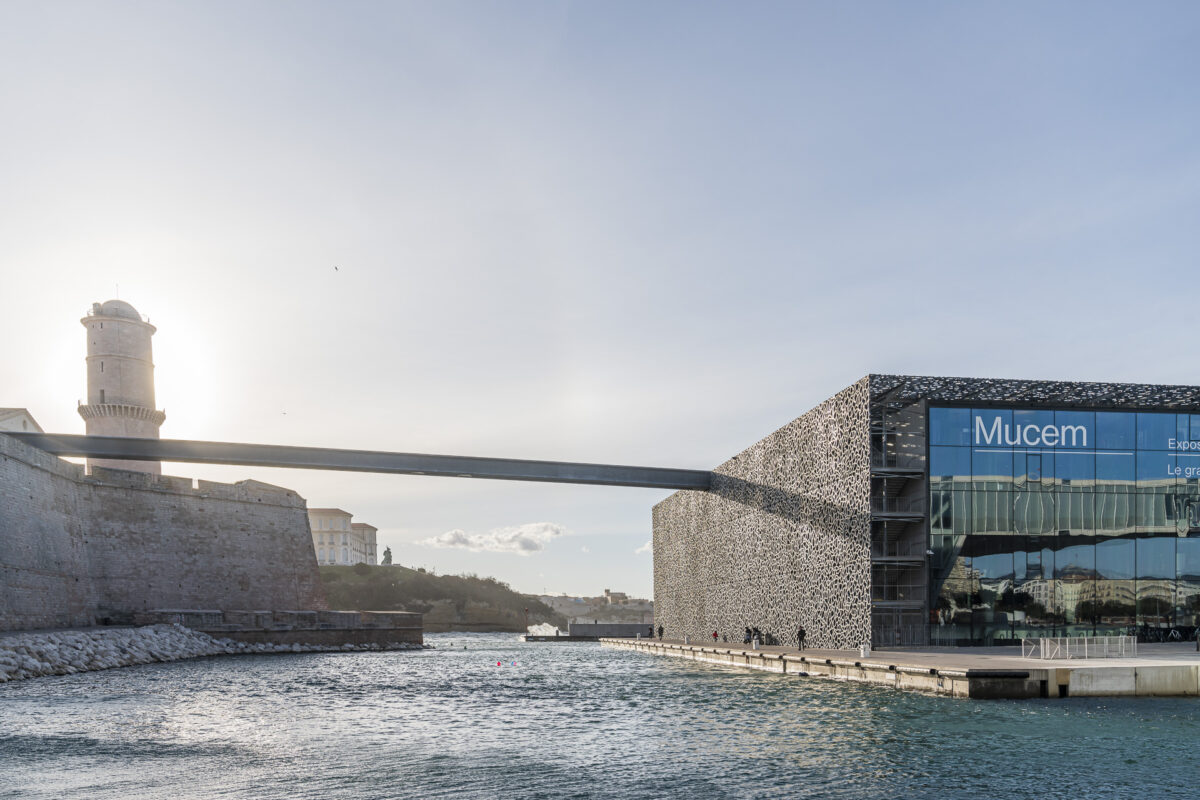
Opening hours MuCEM: In the summer months from May daily except Tuesdays 10:00 – 19:00 | Single ticket for adults 11 euros | Family tickets (for up to 2 adults and 5 children) 18 euros | More info: mucem.org
9. Take a Photo Stop at Palais Longchamp
After this tour through historic Marseille and the newly designed harbor districts, the Palais Longchamp in the Cinq-Avenues district offers a real contrast. The palatial building was constructed in the late 19th century in the style of historicism. Its main purpose: a water reservoir for the waters of the Durance – the main drinking water source of Marseille. Additionally, the Palais Longchamp houses the Musée des Beaux Arts as well as the Natural History Museum. A look inside the former is worth it – we checked. Moreover, admission is free!
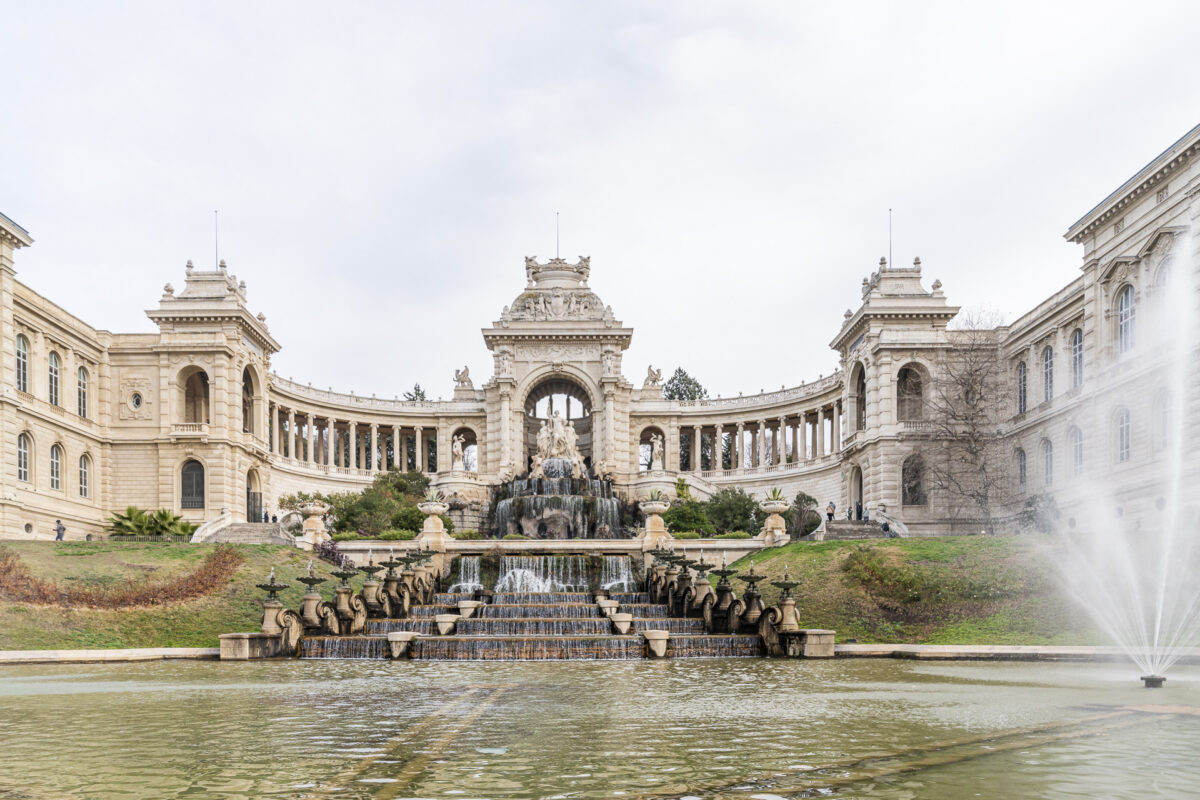
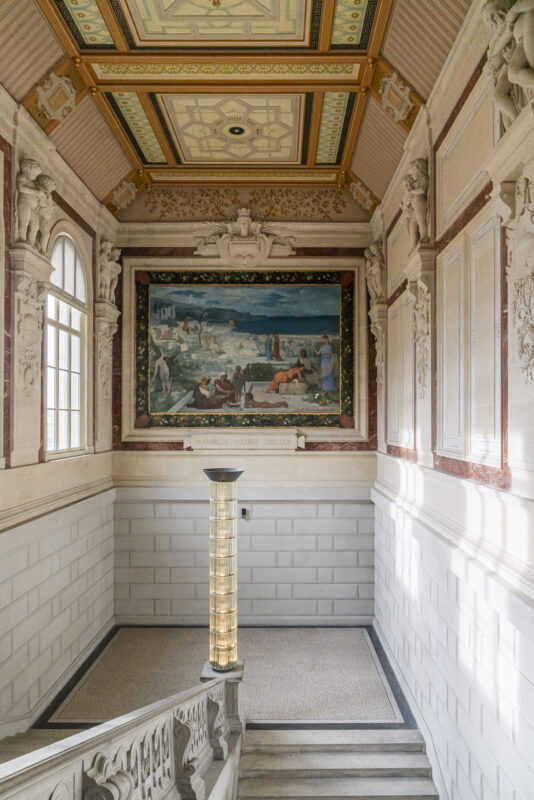
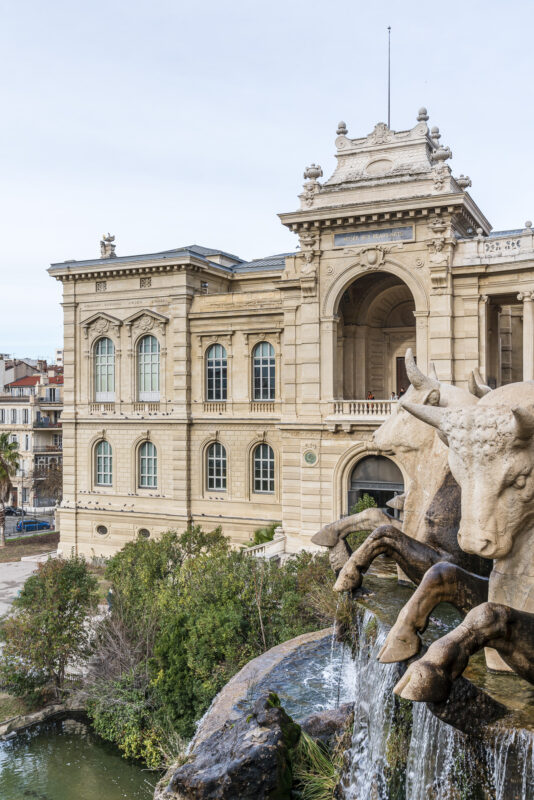
Opening hours Musée des Beaux Arts: Daily except Tuesdays 10:00 – 18:00 | Free entry to the collection | More info: musees.marseille.fr
10. Stroll Through the Friche la Belle de Mai Cultural Center
The photo stop at Palais Longchamp can be nicely combined with a visit to the Friche la Belle de Mai cultural center. The site of a former tobacco factory has been repurposed into a media, culture, and creative center. Skateboarding spots, cafés, restaurants, studios, theaters – a colorful and exciting mix awaits you here.
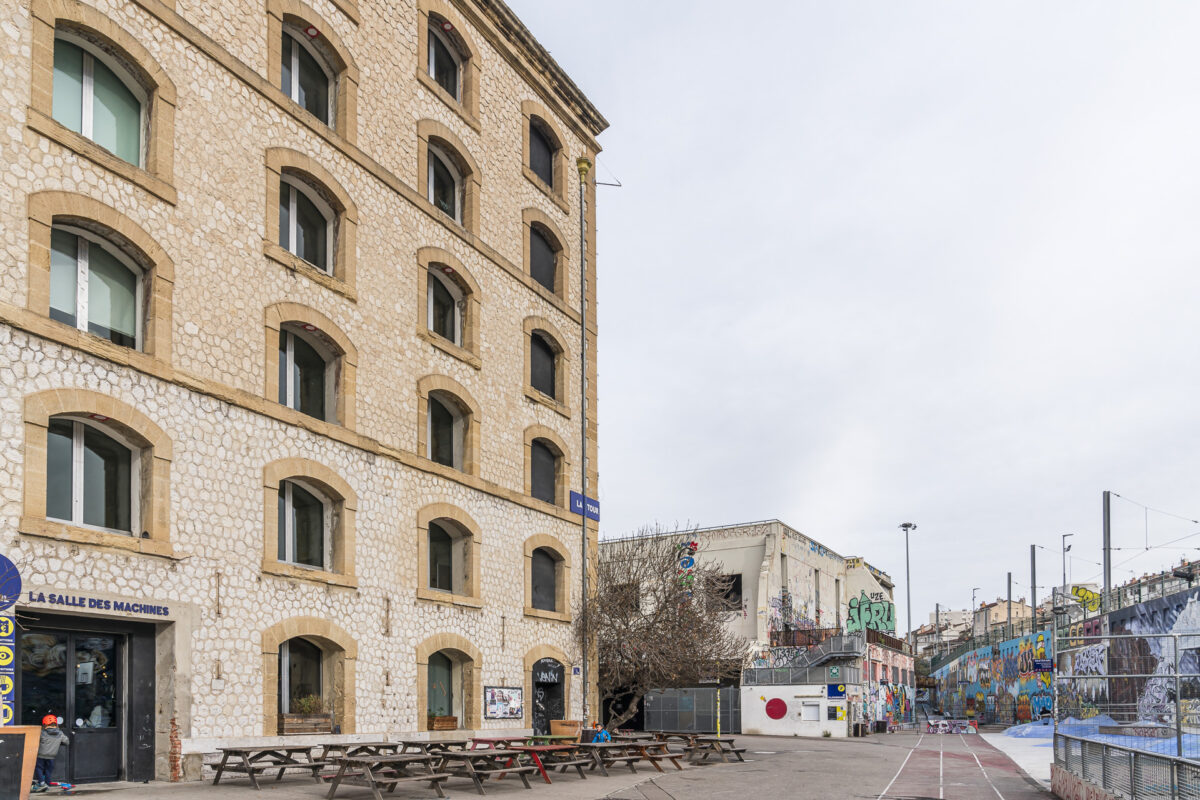
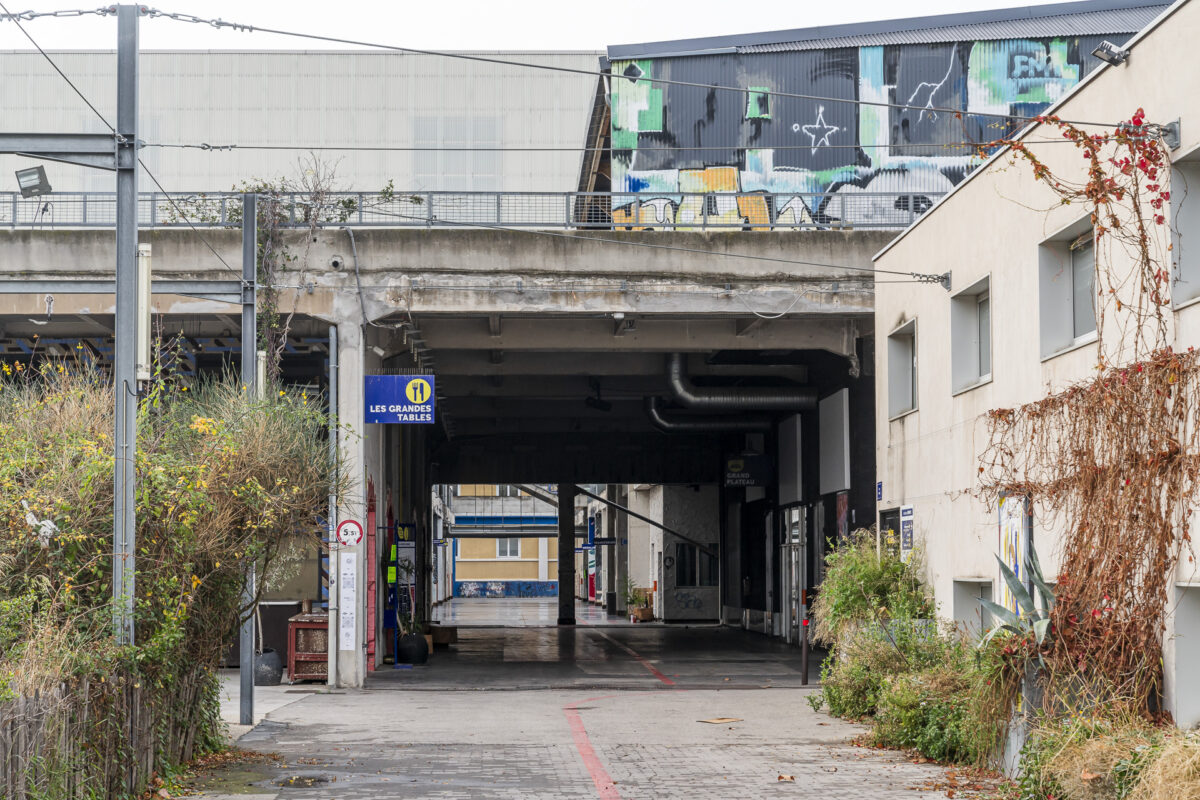
A special attraction is the exhibition area “La Tour – Panorama,” which includes a large rooftop terrace with a view over the city. However, since this is only accessible in the afternoon from 1:00 PM or 2:00 PM according to regular opening hours, we postponed this for a future visit to Marseille.
For you, I have this tip: Plan your visit to Friche la Belle de Mai in the late afternoon! More practical information can be found here: lafriche.org.
11. Admire the Sunset from the Beach
To end a sightseeing day in Marseille on a high note, you have two options. Either grab some drinks and snacks from a store and find a nice spot on the beach. My favorite for sunsets in the winter months is Plage de la Pointe d’Endoume.
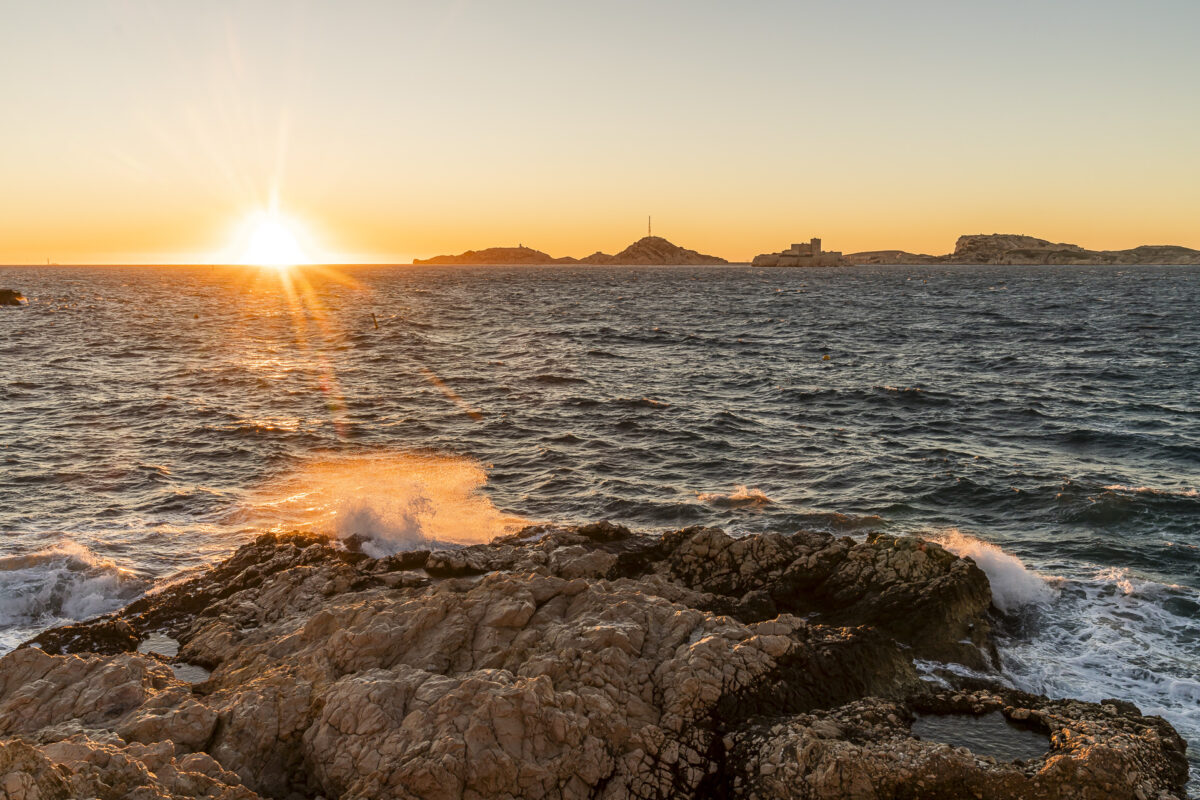
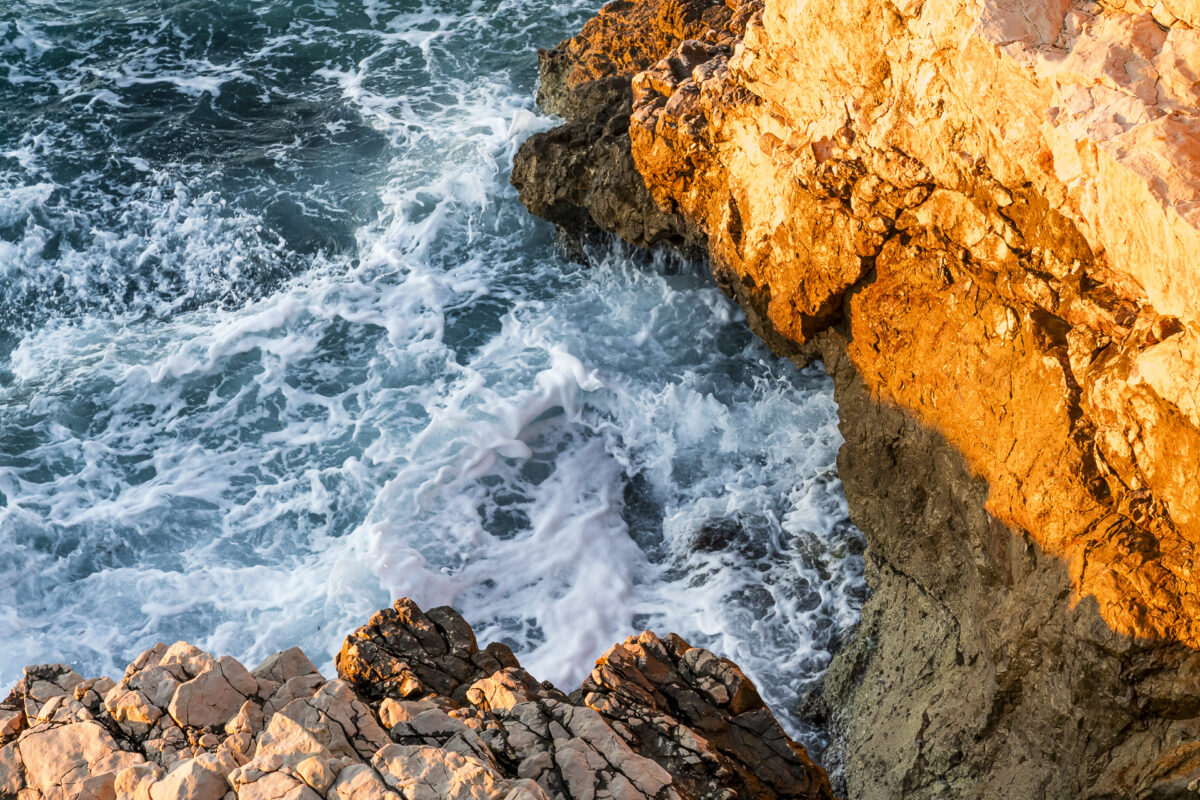
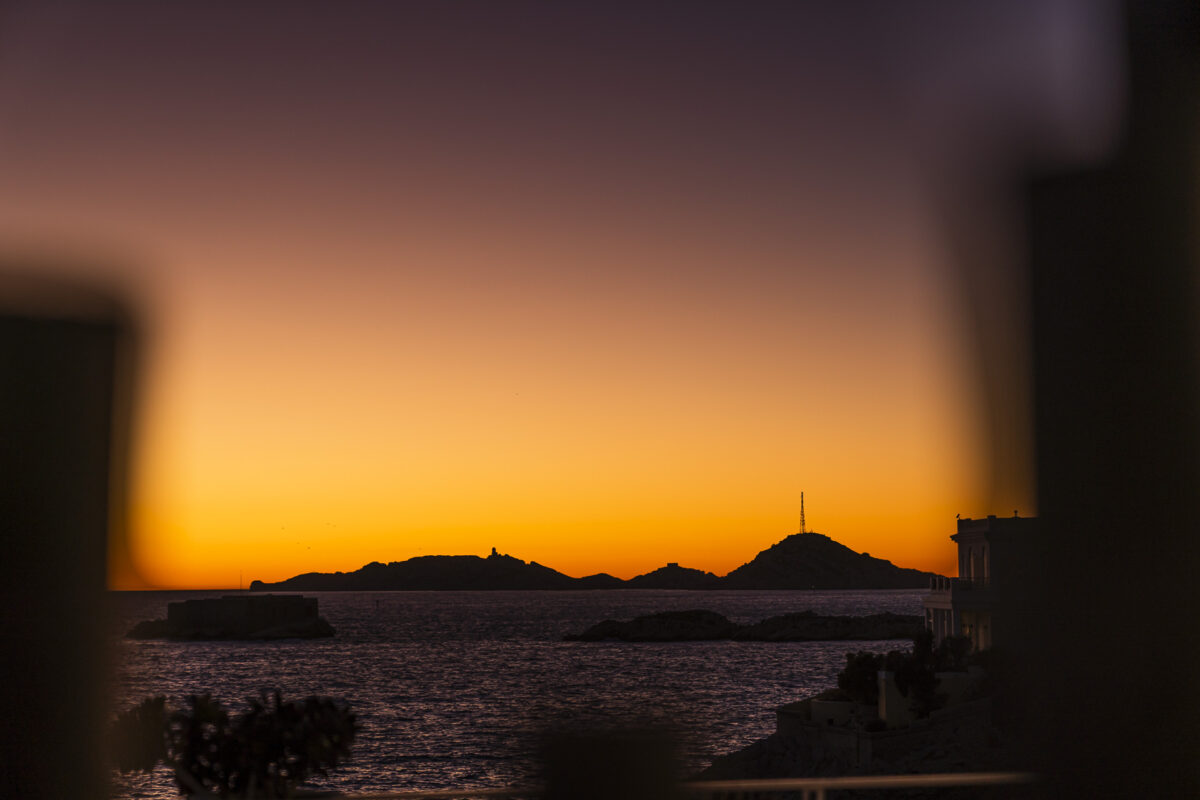
12. Start the Evening Above the Rooftops of Marseille
Alternatively, reserve a table high above the rooftops of the Old Port at the trendy Bar Julis. Here you can enjoy creative cocktails and delicious tapas. Definitely a favorite spot for a sundowner.
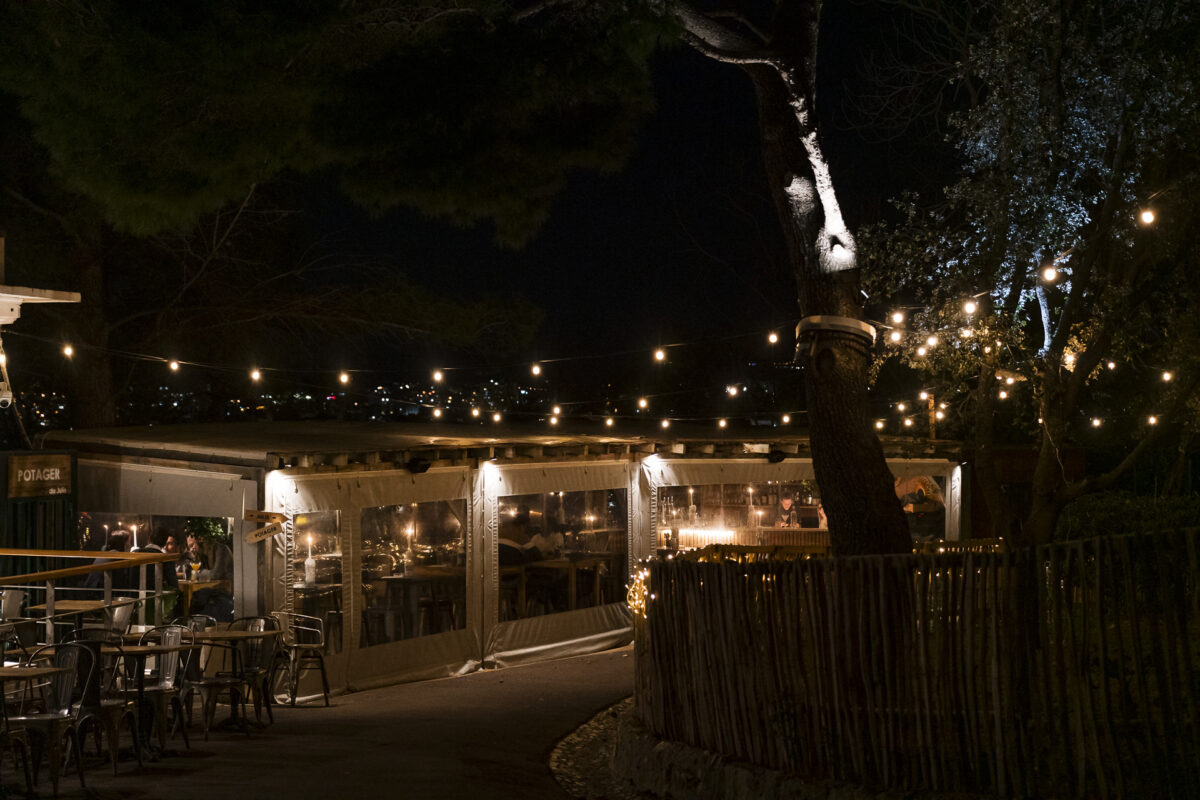
More Tips for Your Stay in Marseille
- Centrally located at the edge of the Old Port, you can stay at the Hotel C2 (partner link). We checked in at this chic 5-star hotel for another two nights at the end of our two-week vacation in southern France.
- My culinary highlight was at the second 3-star restaurant in Marseille – the AM par Alexandre Mazzia (here is the restaurant’s website). Admittedly an expensive treat, but a fantastic experience. And if I had to choose between the two 3-star restaurants, it would take me no time to decide!
- A city trip to Marseille can be easily undertaken from Switzerland by train. With one transfer, you can reach the centrally located Marseille-Saint-Charles station from Switzerland in 6 hours and 11 minutes.
- I recommend planning at least two nights / three days for a visit to Marseille.
- Marseille can be visited year-round. If you want to avoid the peak travel season, plan your city trip from October to April. A plus point for this time of year: you can enjoy the sun without suffering from the heat.
More Tips for City Trips to France
Is Marseille too far for a short trip? How about visiting Annecy, Colmar, Dijon, or Strasbourg instead? Other great city trip destinations in France, in my opinion, are Lyon, Bordeaux, and – a hidden gem – Le Havre. And if you want to combine your visit to Marseille with other worthwhile destinations in the area, then check out my tips for Saint-Rémy-de-Provence and Arles.



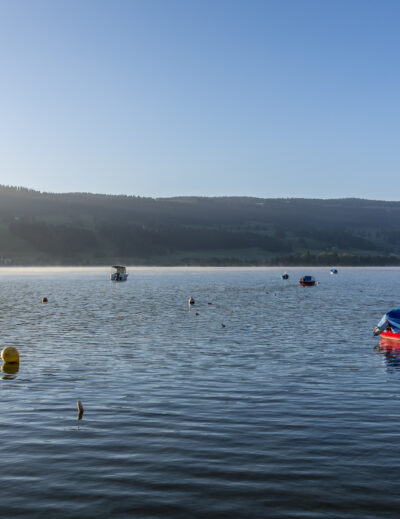

Leave a Reply